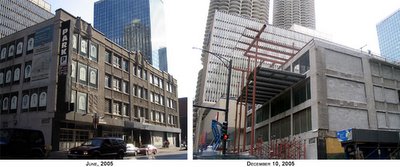
John Hill, the Chicago architect behind the popular
Archidose blog, has launched a noble experiment,
The Archi-Tourist, that aims to provide travelers with a guide to architecture that goes beyond the usual iconic stararchitect buildings. Initially, the guide offers information on 50 projects in twelve cities across three continents.
The Chicago section currently includes nine buildings, including John Ronan's
Akiba-Schechter Jewish Day School, Tadao Ando's little known
Eychaner/Lee House, Jeanne Gang's
Kam Liu Building in Chinatown, and Jean-Paul Viguier's
Sofitel Hotel. Each entry follows a standardized format, with architect name, completion date, image, map and location, as well as instructions on how to get to the building via public transpotation. If the building is open to the public, access hours are also listed.
The site is built on Wiki technology, which means that it allows others to add content. If there's a building you want to add, go to the
contributor page to learn how its done.
Hill obviously can't do it alone, but if others help fill in the content, and the site is sufficiently optimized and publicized so that other sites link to it and it starts getting a decent placement in the search engines, Archi-Tourist could become an invaluable tool for tourists and architecture buffs alike - an on-line, traveler-friendly complement to local print resources such as the
AIA Guide to Chicago and
Chicago's Famous Buildings, as well as a self-enriching on-line community.







































